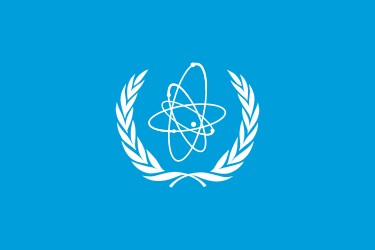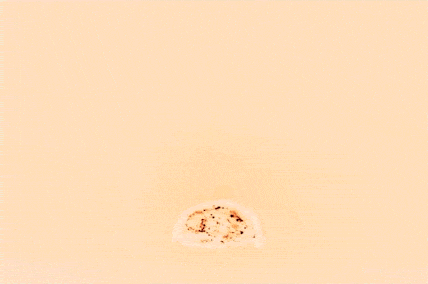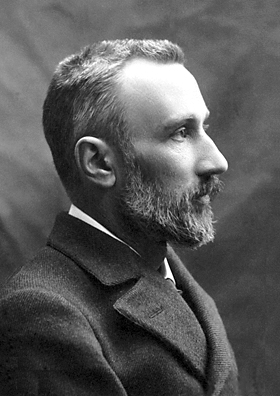Com o incremento da proliferação nuclear na década de 90, as tarefas da AIEA passaram a incluir as inspeções e investigações de suspeitas violações do Tratado de Não Proliferação Nuclear sob mandato das Nações Unidas; contudo, caso encontre indícios de uso militar em programas que inspeciona, apenas poderá reportá-los ao Conselho de Segurança das Nações Unidas, que detém o exclusivo de medidas coercivas. A AIEA mantém, como um dos seus instrumentos, o International Nuclear Information System (INIS), uma base de dados sobre a utilização pacífica da energia nuclear.
sábado, julho 29, 2023
A Agência Internacional de Energia Atómica faz hoje 66 anos
Postado por
Fernando Martins
às
06:06
0
bocas
![]()
Marcadores: Agência Internacional de Energia Atómica, AIEA, energia nuclear
domingo, julho 16, 2023
O primeiro teste nuclear foi há 78 anos...
Postado por
Fernando Martins
às
07:08
0
bocas
![]()
Marcadores: energia nuclear, II Grande Guerra, II Guerra Mundial, Projecto Manhattan, Trinity, USA
segunda-feira, julho 10, 2023
Os Serviços Secretos franceses assassinaram o fotógrafo Fernando Pereira e afundaram o Rainbow Warrior há 38 anos...
Postado por
Fernando Martins
às
00:38
0
bocas
![]()
Marcadores: assassinos, Ecologia, energia nuclear, Fernando Pereira, França, Greenpeace, Nova Zelândia, Rainbow Warrior, Serviços Secretos, vergonha
segunda-feira, maio 15, 2023
Pierre Curie nasceu há 164 anos
Pierre Curie (Paris, 15 de maio de 1859 - Paris, 19 de abril de 1906) foi um físico francês, pioneiro no estudo da cristalografia, magnetismo, piezoeletricidade e radioatividade.
Postado por
Fernando Martins
às
16:40
0
bocas
![]()
Marcadores: cristalografia, energia nuclear, magnetismo, Marie Curie, Pierre Curie, Prémio Nobel, radioactividade
quarta-feira, abril 26, 2023
O desastre de Chernobil foi há 37 anos...
Boa tarde, camaradas. Todos vocês sabem que houve um inacreditável erro – o acidente na central nuclear de Chernobil. Ele afetou duramente o povo soviético, e chocou a comunidade internacional. Pela primeira vez, nós nos confrontámos com a força real da energia nuclear, fora de controle.
Postado por
Fernando Martins
às
00:37
0
bocas
![]()
Marcadores: acidente nuclear, acidente nuclear de Chernobil, Bielorrússia, energia nuclear, Gorbachev, Rússia, Ucrânia, URSS
quarta-feira, abril 19, 2023
Pierre Curie morreu há 117 anos...
Pierre Curie (Paris, 15 de maio de 1859 - Paris, 19 de abril de 1906) foi um físico francês, pioneiro no estudo da cristalografia, magnetismo, piezoeletricidade e radioatividade.
Postado por
Fernando Martins
às
01:17
0
bocas
![]()
Marcadores: cristalografia, energia nuclear, magnetismo, Marie Curie, Pierre Curie, Prémio Nobel, radioactividade
sexta-feira, julho 29, 2022
A Agência Internacional de Energia Atómica faz hoje 65 anos...!
Com o incremento da proliferação nuclear na década de 90, as tarefas da AIEA passaram a incluir as inspeções e investigações de suspeitas violações do Tratado de Não Proliferação Nuclear sob mandato das Nações Unidas; contudo, caso encontre indícios de uso militar em programas que inspeciona, apenas poderá reportá-los ao Conselho de Segurança das Nações Unidas, que detém o exclusivo de medidas coercivas. A AIEA mantém, como um dos seus instrumentos, o International Nuclear Information System (INIS), uma base de dados sobre a utilização pacífica da energia nuclear.
Postado por
Fernando Martins
às
06:50
0
bocas
![]()
Marcadores: Agência Internacional de Energia Atómica, AIEA, energia nuclear
sábado, julho 16, 2022
O primeiro teste nuclear foi há 77 anos
Postado por
Fernando Martins
às
07:07
0
bocas
![]()
Marcadores: energia nuclear, II Grande Guerra, II Guerra Mundial, Projecto Manhattan, Trinity, USA
domingo, julho 10, 2022
Os Serviços Secretos franceses afundaram o Rainbow Warrior e assassinaram o fotógrafo Fernando Pereira há 37 anos
Postado por
Fernando Martins
às
00:37
0
bocas
![]()
Marcadores: assassinos, Ecologia, energia nuclear, Fernando Pereira, França, Greenpeace, Nova Zelândia, Rainbow Warrior, Serviços Secretos, vergonha
terça-feira, abril 26, 2022
O acidente nuclear de Chernobil foi há 36 anos...
| Boa tarde, camaradas. Todos vocês sabem que houve um inacreditável erro – o acidente na central nuclear de Chernobil. Ele afetou duramente o povo soviético, e chocou a comunidade internacional. Pela primeira vez, nós nos confrontámos com a força real da energia nuclear, fora de controle. |
Postado por
Fernando Martins
às
00:36
0
bocas
![]()
Marcadores: acidente nuclear, acidente nuclear de Chernobil, Bielorrússia, energia nuclear, Gorbachev, Rússia, Ucrânia, URSS
terça-feira, abril 19, 2022
Pierre Curie morreu há 116 anos
Pierre Curie (Paris, 15 de maio de 1859 - Paris, 19 de abril de 1906) foi um físico francês, pioneiro no estudo da cristalografia, magnetismo, piezoeletricidade e radioatividade.
Postado por
Fernando Martins
às
01:16
0
bocas
![]()
Marcadores: cristalografia, energia nuclear, magnetismo, Marie Curie, Pierre Curie, Prémio Nobel, radioactividade
quinta-feira, julho 29, 2021
A Agência Internacional de Energia Atómica faz hoje 64 anos
Postado por
Fernando Martins
às
06:40
0
bocas
![]()
Marcadores: Agência Internacional de Energia Atómica, AIEA, energia nuclear
sexta-feira, julho 16, 2021
O primeiro teste nuclear foi há 76 anos
Postado por
Fernando Martins
às
07:06
0
bocas
![]()
Marcadores: energia nuclear, II Grande Guerra, II Guerra Mundial, Projecto Manhattan, Trinity, USA
sábado, julho 10, 2021
Os Serviços Secretos franceses afundaram o Rainbow Warrior e assassinaram o fotógrafo Fernando Pereira há 36 anos
Postado por
Fernando Martins
às
00:36
0
bocas
![]()
Marcadores: assassinos, Ecologia, energia nuclear, Fernando Pereira, França, Greenpeace, Nova Zelândia, Rainbow Warrior, Serviços Secretos, vergonha
segunda-feira, abril 26, 2021
O acidente nuclear de Chernobil foi há 35 anos...
| Boa tarde, camaradas. Todos vocês sabem que houve um inacreditável erro – o acidente na central nuclear de Chernobil. Ele afetou duramente o povo soviético, e chocou a comunidade internacional. Pela primeira vez, nós nos confrontámos com a força real da energia nuclear, fora de controle. |
Postado por
Fernando Martins
às
00:35
0
bocas
![]()
Marcadores: acidente nuclear, acidente nuclear de Chernobil, Bielorrússia, energia nuclear, Gorbachev, Rússia, Ucrânia, URSS










